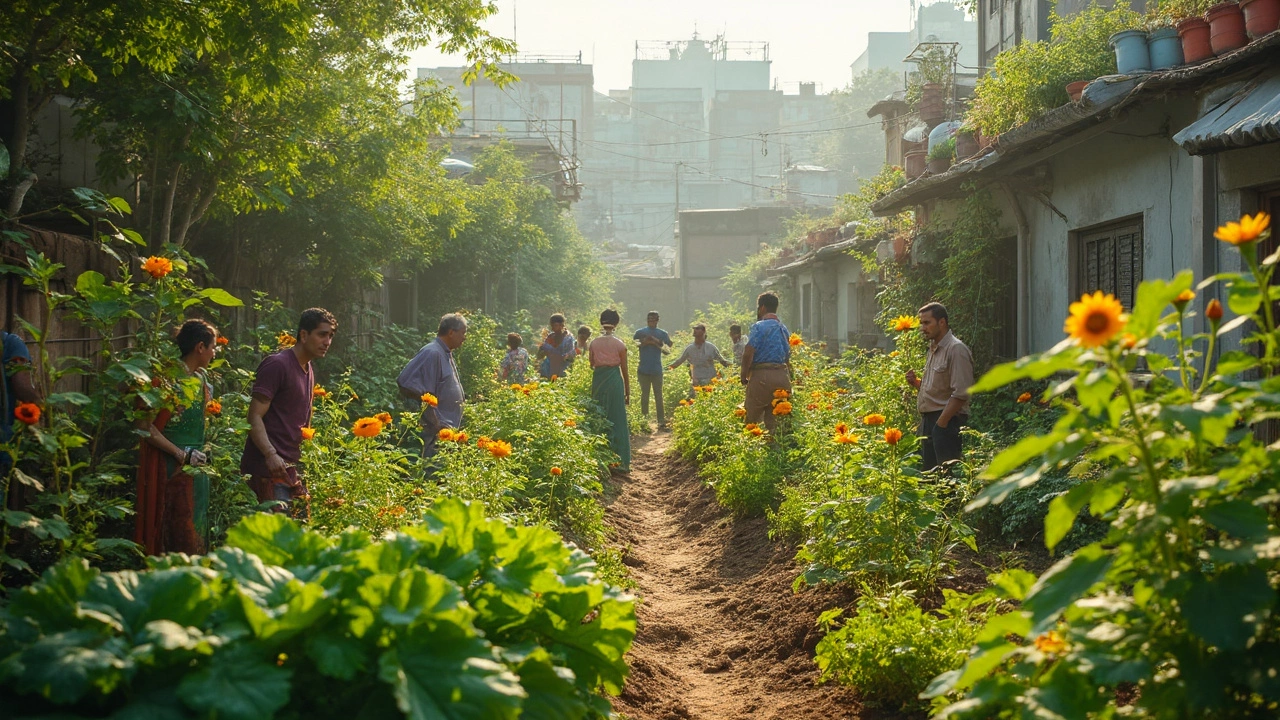Regenerative Agriculture: Boost Your Garden’s Health Naturally
Ever wondered why some gardens keep getting better year after year while others look worn out? The secret is regenerative agriculture – a set of practices that work with nature instead of fighting it. In India’s diverse climate, these methods can mean richer soil, less water waste, and bigger, healthier harvests.
What Is Regenerative Agriculture?
Regenerative agriculture goes beyond "just don’t use chemicals." It focuses on restoring soil life, capturing carbon, and building a system that feeds itself. Think of the soil as a living community of microbes, worms, and tiny insects. When you give them food and shelter, they turn waste into nutrients, improve water retention, and protect plants from pests.
Easy Practices for Every Garden
1. Mulch like a pro. A thick layer of straw, leaves, or dry grass keeps the soil cool, reduces evaporation, and provides food for microbes as it breaks down. Spread 5‑8 cm around the base of plants and you’ll see less weed growth and moister soil.
2. Rotate crops and mix species. Growing the same vegetable in the same spot year after year depletes specific nutrients. Swap tomatoes for beans, then for leafy greens. Even a short three‑year rotation helps replenish nitrogen and breaks pest cycles.
3. Add organic matter. Compost, kitchen scraps, and farmyard manure are gold for soil health. Aim for at least 2‑3 kg of compost per square meter each season. The microbes love it, and your plants get a steady nutrient supply.
4. Use cover crops. Green manures like chickpea, mustard, or millet grow quickly, shade the soil, and lock in nitrogen. After they flower, cut them down and let them decompose on the surface – a free fertilizer.
5. Reduce tillage. Turning the soil disrupts the worm network and releases stored carbon. Instead of deep plowing, try shallow, occasional loosening or use a broadfork. The soil stays structured, and water drains better.
6. Capture rainwater. Simple rain barrels or earthen ponds store water for dry spells. Pair them with drip irrigation—buried drip lines placed at the right depth can deliver water directly to roots, saving up to 70 % of water.
All these tips tie back to the posts you’ll find under the regenerative agriculture tag: from drip irrigation guides that cut waste, to sustainable gardening ideas that use native plants and compost. Each article gives step‑by‑step advice you can try today.
Want to see quick results? Start with mulching and adding compost. In just a few weeks you’ll notice cooler soil and fewer weeds. Then layer on cover crops and simple crop rotation. Over a season you’ll feel the difference – richer soil, stronger plants, and less reliance on external inputs.Regenerative agriculture isn’t a distant, expensive project. It’s a mindset that small actions add up to a healthier garden and a healthier planet. Give one or two of these practices a try, watch the soil come alive, and let your garden do the work for you.

Can You Do Regenerative Agriculture Without Animals? Straight Talk for Gardeners
Is it possible to grow healthy soil and productive crops using regenerative agriculture without animals? This article digs into the facts behind animal-free approaches, covers the challenges, and explores the smart tactics gardeners and small farmers are using right now. Whether you're vegan, want to cut your carbon footprint, or just don't have space for chickens or cows, you'll get real-world tips for keeping your soil alive. Expect honest talk about compost, cover crops, veggie mulches, and why some folks say animals are only part of the story.
About
Sustainable Gardening
Latest Posts

Most Beautiful Flower in the World: What Truly Stands Out?
By Alden Thorne May 29, 2025

Best Garden Tools: What's a Good Gift for a Gardener?
By Alden Thorne Apr 28, 2025

Sacred Plant in India: Why Tulsi Rules Flower Gardens
By Alden Thorne Jun 22, 2025
